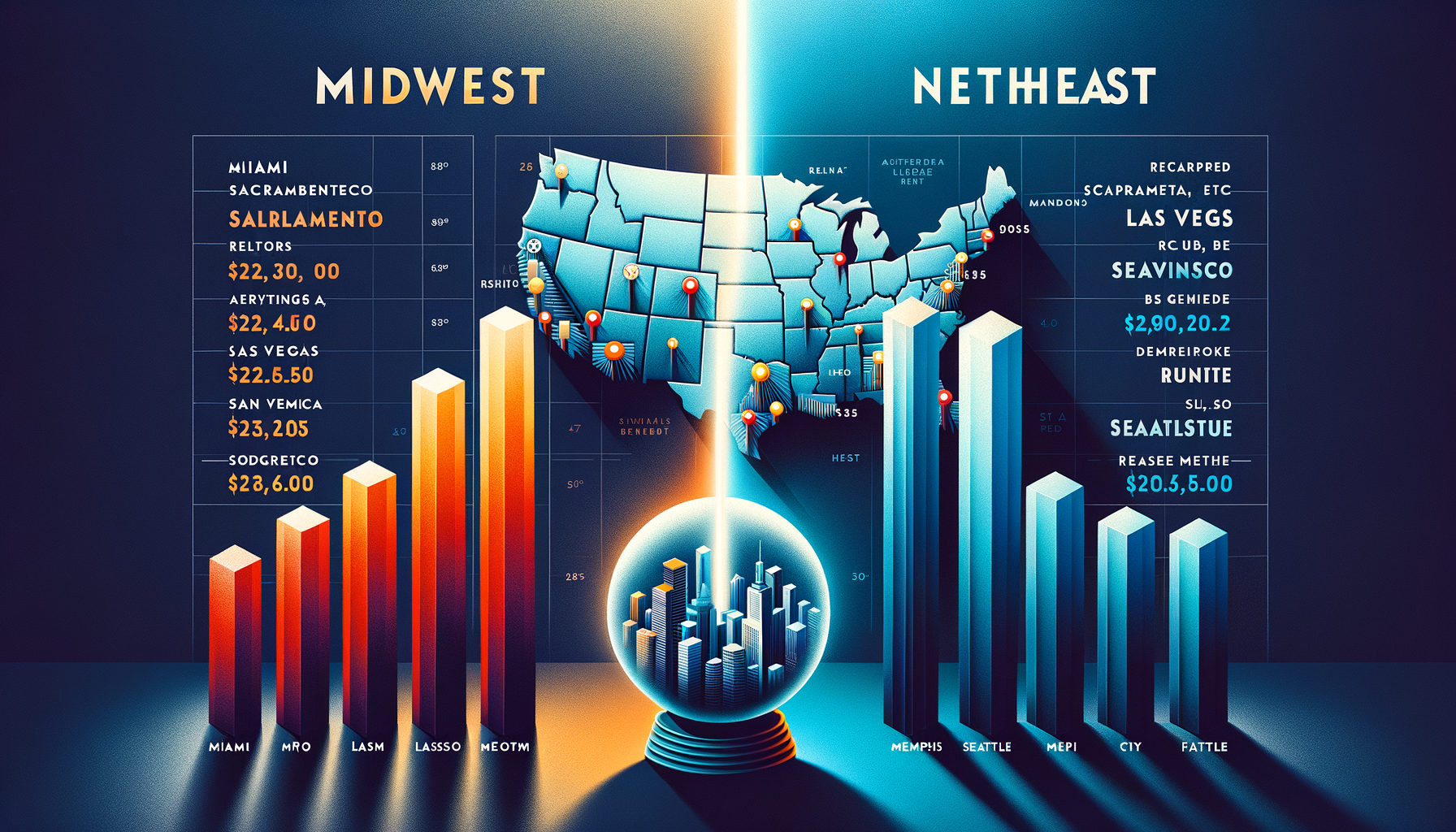
Understanding the stability of rent growth in the US can provide vital insights into the housing market dynamics. As we began 2022, the rate of rent increase demonstrated little change, carrying a growth trend from the previous year. After a phenomenal surge in rent throughout 2021, the rental market stabilized in January 2022 with a mere 0.1% decline compared to December 2021.
Digging deep into this trend, the robust rental market oscillated around a 14% increase on a year-on-year basis, a stark contrast to 2020 when, in the midst of a global pandemic, the rental market was noticeably more subdued. The robust rent growth in recent times has been a significant contributing factor to the overall health of the housing market.
In January 2022, the national median rent stood at $1,749, just $2 less than the previous month. When we dive into city-wise data, we can notice some interesting patterns and variations.
In one of America’s prominent cities, Miami, rent increased 40% annually, the highest among major cities, making it one of the hottest rental spots in the country. However, this is not uniform across the country. Cities such as Sacramento and Las Vegas also experienced substantial rent growth, with increases of 26% and 22% respectively. Interestingly, Memphis witnessed a 1.8% reduction in rent, bucking the national trend.
The case gets even more intriguing when we look at regions where tech thrives. San Francisco and Seattle, known for their tech hubs, have faced contrasting trends. Despite being the city with the country’s highest median rent, San Francisco’s rent growth came up short in comparison to how it surged in 2021, forming somewhat of a cooling trend.
Seattle, on the other hand, showed strong resilience with an 11% year-on-year increase in January, with recent emphasis on work-from-home and remote working policies making it an attractive location for many remote-working tech employees.
These evident differences in trends across various cities showcase the diverse nature of the US rental market. Factors such as economic growth, job opportunities, tech industry dominance, and demographics significantly influence these trends.
While it’s tempting to attribute the substantial increase in rent exclusively to pandemic-induced market volatility, economists suggest many factors at play. One such factor is the shortage of affordable housing in many parts of the country. This shortage inflates demand for rental properties, driving rent prices up.
Another driving force behind this shift is the sudden rush of people from high-cost cities to lower-cost areas, leading to an influx of demand for rental properties in these areas. While this has inflated rent prices in some of these locations, the overall national median rent has remained stable.
Also, the increase in rental prices can be indicative of more profound trends in play, like increasing income inequality, rising house prices, and increased cost of living. All of these can contribute to an increased demand for rental properties, as for many people, renting becomes a more affordable and practical option than buying a home.
As we progress into 2022, it remains to be seen how these trends play out. Will rising mortgage rates and unaffordable home prices continue to push people towards rentals? Or will the launching of federal housing assistance programs balance out the trends?
Predicting future patterns in the housing market can be challenging. Market behaviors are often contingent on complex, interconnected factors – ranging from interest and mortgage rates to political and social elements.
Ultimately, the rental growth trend over the last year is a testament to a dynamic and resilient housing sector. Regardless of the challenges, changes, and trends, the rental market remains a crucial part of the economy. Each fluctuation signifies a shift in the market, reflecting people’s residences’ ever-adapting choices.
Analyzing these trends is essential, especially for individuals making rental decisions or investors looking to explore opportunities in the real estate sector. For prospective renters, understanding the rental market in different cities can help choose the most cost-effective place to live. For investors, interpreting rent growth can point to economically vibrant locations with a high return on investment potential.
In summary, despite the fluctuations observed in rents in various parts of the country, the overall rental market displayed resiliency in January 2022, following the pattern from 2021. However, the market remains changeable, with different regions reflecting varying economic conditions, housing demands, job availability, and demographic preferences.
As we progress through 2022, it is essential to continue monitoring these patterns and trends. They are critical indicators of the economic health of a region and, to a larger extent, the economic situation of the country. However, as always, the market could shift in response to unforeseen events and policy changes. Keeping an eye on these trends will enable renters, homeowners, and investors to make informed decisions and navigate the ever-changing tides of the rental market.

